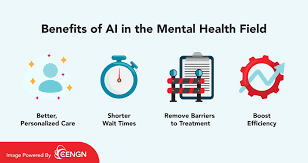Mental health has always been present in society. However, it’s only in recent decades that it’s started being properly diagnosed and managed. The taboo around mental health issues has kept people from reporting it and it’s traditionally not been fully integrated into the practice of medicine. Fortunately, a lot of that is now changing. There’s been a seismic shift in the recognition of mental health as a major cause of human suffering and as a driver of poor outcomes for other diseases. As such, ever-increasing resources are being directed at addressing mental health issues. In 2021, mental health was the number one recipient of venture dollars amongst all medical specialties.
There’s increasing evidence that mental health issues can be diagnosed, monitored and managed using digital technologies such as cell phones, wearables and AI. Given that there’s less reliance on physical exam findings in the diagnosis and management of mental health issues, it’s one of the specialties that’s well suited for remote management.
Psychiatry researchers are already tapping into AI to better understand mental illnesses, and they’re using this newfound knowledge to build more personalized (and thus more effective) treatment plans. Psychiatry is very different to other fields because mental healthcare specialists don’t usually have specific biomarkers or clear findings in an imaging scan that they can use to make a diagnosis. Instead, mental health practitioners usually need to rely on a combination of the patient’s medical history and the symptoms that they report themselves. As if that wasn’t difficult enough, two patients with the same diagnosis could have dramatically different symptoms.
At the moment, AI is being used to help researchers to more fully assess the heterogeneity of psychiatric conditions. Today’s models can sift through the huge amounts of data there is about patient behavior, medical, social and family histories, responses to earlier treatments and information that’s acquired from new devices like smartphones and wearable technology. They can then help medical practitioners to fine-tune the decisions they have to make about patient care.
Although early in their applications, they are very promising in separating granular data and identify subtle clues that can better characterize patient issues and diagnoses. This will eventually lead to more personalized management. We will discuss a couple of these early applications in the next blog post.






